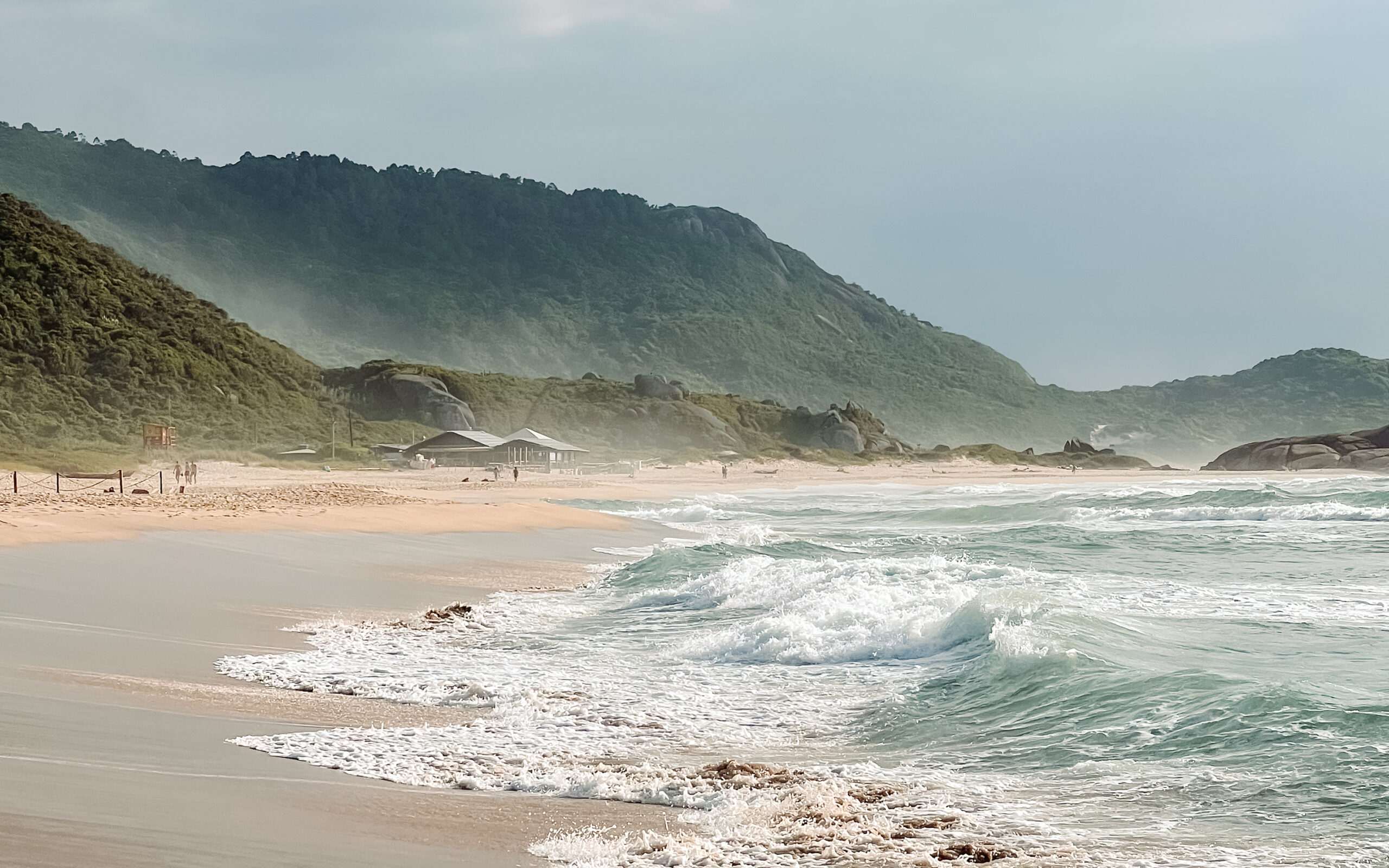Hailing from Brazil, I’ll admit I’m spoiled when it comes to beaches. Today, the Atlantic stretches out in a mosaic of blues just steps from my front door—a horizon the color of ink that gently fades to turquoise as the waves reach my feet.
It’s the daily canvas I’m rewarded with on Ipanema Beach, undoubtedly one of the very best beaches in South America. But I refuse to believe Brazil is the only country worthy of a beach vacation on this vast continent. South America is home to the world’s highest mountain range, the driest desert, and the largest tropical rainforest, so it only makes sense that its coastlines rise to the occasion, too.
That’s why I set out to write this guide: to look beyond the shores of Rio de Janeiro and shine a light on Colombia’s Caribbean sands, Ecuador’s pristine Galápagos shores, and others—finally getting the recognition they deserve.
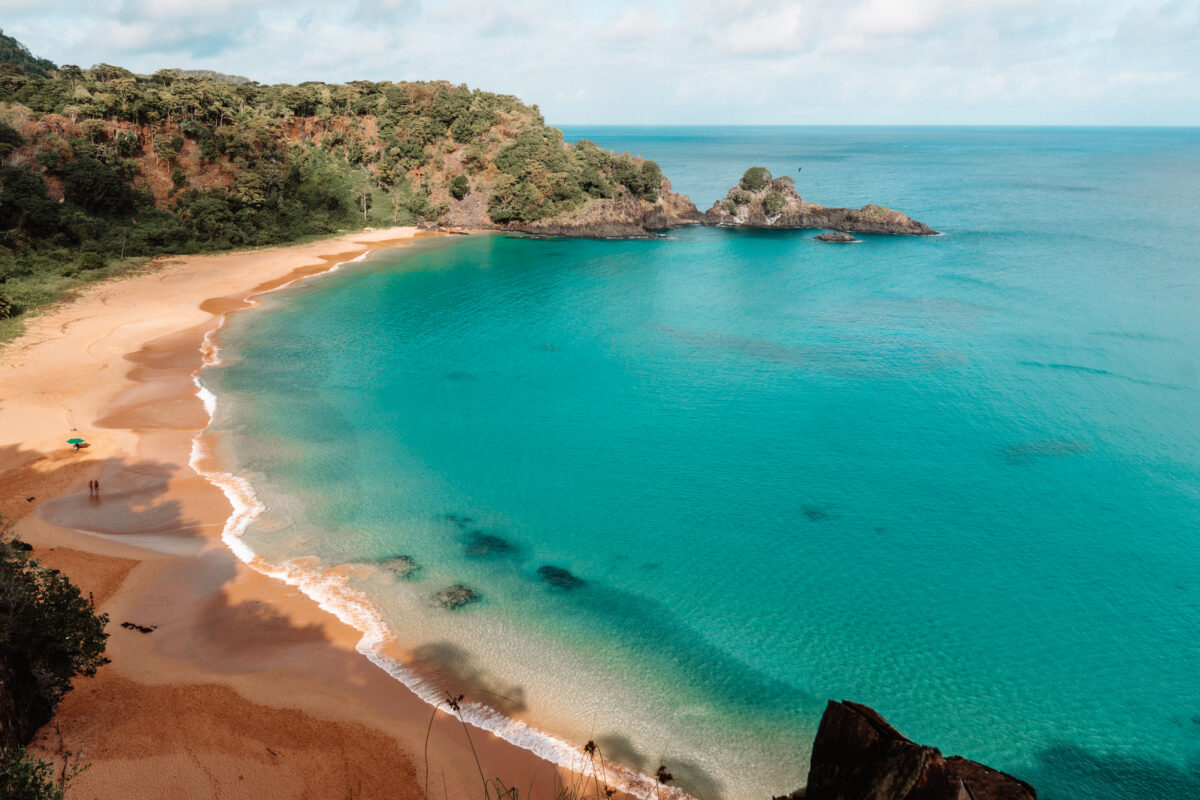
Praia da Baía do Sancho, Brazil
We can’t list the best beaches in South America without including Baía do Sancho. Consistently named one of the most beautiful beaches in the world, this picture-perfect cove can be found on Fernando de Noronha, a remote island off Brazil’s northeast coast.
The water here is so clear it rivals a swimming pool, but with the bonus of vibrant marine life. Snorkeling is a must—on both of my visits, I spotted sharks, sea turtles and giant schools of fishes gliding through the turquoise shallows. Don’t worry about the sharks: Despite their reputation, these reef sharks are harmless, sharing the ocean peacefully with swimmers and snorkelers.
Getting to Baía do Sancho is an adventure in itself. The beach is framed by dramatic cliffs, and the only way down is through a narrow staircase carved into the rock. Once your feet hit the soft golden sand, the effort melts away, leaving you in one of South America’s true natural wonders.
Pontal do Atalaia, Brazil
Often called the “Brazilian Caribbean,” the small town of Arraial do Cabo is home to some of Brazil’s clearest waters. And none shine brighter than Pontal do Atalaia, recently ranked #20 in the world by The World’s 50 Best Beaches. This shoreline is accessible only by boat or by descending a long, steep staircase carved into the cliffs, which helps preserve its sense of seclusion.
Aside from the cooler water temperatures, the fine white sand and electric-blue sea make this beach feel every bit as paradisical as those in the Caribbean. What sets Pontal apart, though, are its panoramic views. From the top of the cliffs, you can look out over turquoise bays, nearby islands, and the sweeping Atlantic horizon. It’s a reminder that while Brazil has no shortage of famous beaches, some of its most breathtaking coastlines remain just a bit harder to reach.

Ipanema, Brazil
Go ahead, call me biased—but there are few better stretches of sand in the world than Ipanema in Rio de Janeiro. This beach is a feast for the senses, beginning with the backdrop: the Two Brothers Mountain (Morro Dois Irmãos) framing the horizon, its twin peaks rising straight out of the sea. And then there are the sunsets, treated like a performance, where the crowd literally applauds the sun as it disappears into the Atlantic.
On the sand, the energy is just as palpable. While less touristy than neighboring Copacabana, Ipanema is where visitors, kids from nearby favelas, and Rio’s effortlessly beautiful crowd all gather. Beach vendors weave between colorful umbrellas, selling everything from chilled sweet tea and cold beers to buttery steamed corn and grilled meats on a stick. It’s chaotic, colorful, and indesputably Rio.
Punta del Este, Uruguay
Uruguay is the country most travelers have never been to, yet it hides one of South America’s best beach vacations. Set on a peninsula where river and ocean collide, Punta del Este balances the calm, glassy waters of the Río de la Plata with the untamed waves of the Atlantic.
On one side lies Playa Mansa (“Calm Beach”), which is ideal for swimming and long, lazy walks. Just offshore is Isla Gorriti, a small forested island that can be reached via a short boat ride. There, quiet beaches and picnic spots offer an even more peaceful retreat. And then there’s the wilder oceanfront, where Playa Brava (“Wild Beach”) lives up to its name with crashing waves giving something for surfers to talk about.
Of course, Punta del Este isn’t just about natural beauty. Over the years it has evolved into a glamorous retreat, with high-rise hotels, luxury resorts, chic restaurants, and nightlife that has drawn comparisons to Miami, St. Tropez, and the Hamptons.
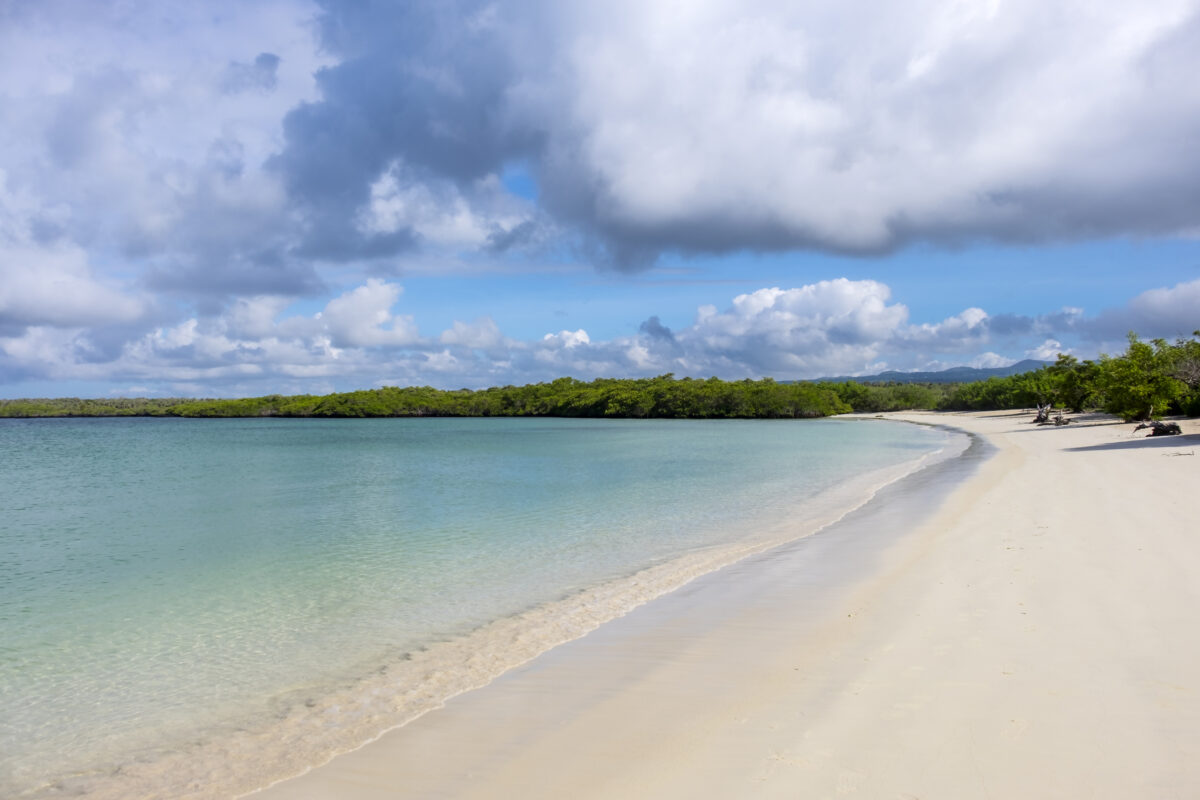
Tortuga Bay, Ecuador
On the Galápagos island of Santa Cruz lies Tortuga Bay, a dazzling stretch of white sand regularly ranked among the world’s best beaches. The beach takes its name from the sea turtles that come ashore to nest, but it’s far from the only wildlife you’ll spot here. It’s also home to the archipelago’s other famous residents, like marine iguanas, Sally Lightfoot crabs, pelicans, and the occasional flamingo wading in the salt lagoon behind the mangroves.
This beach offers two distinct experiences: a wide open shoreline as well as a sheltered lagoon ideal for swimming, snorkeling, or kayaking among rays and reef sharks. What makes Tortuga Bay unforgettable is its combination of pristine natural beauty with abundant animal encounters—a reminder that in the Galápagos, we are simply guests in a thriving marine environment.
Cabo San Juan, Tayrona National Park, Colombia
Tayrona National Park is one of Colombia’s greatest natural treasures. Here, the Sierra Nevada de Santa Marta mountains cascade into the Caribbean Sea, creating a wild coastline of jungle, granite boulders, and golden sand. Yet no beach captures this magic more than Cabo San Juan.
Most visitors reach it by hiking two to three hours from the park’s El Zaino entrance, a moderate trek through tropical forest and past smaller beaches like Arrecifes and La Piscina. The payoff is a stunning crescent of sand divided into two bays: one calm enough for swimming, the other open to stronger currents. Perched above the beach is a thatched hut where travelers can rent hammocks with sweeping sea views.
Many come on a day trip from Santa Marta or Taganga, but spending the night in one of those hammocks offers those once-in-a-lifetime experiences you surely won’t regret.
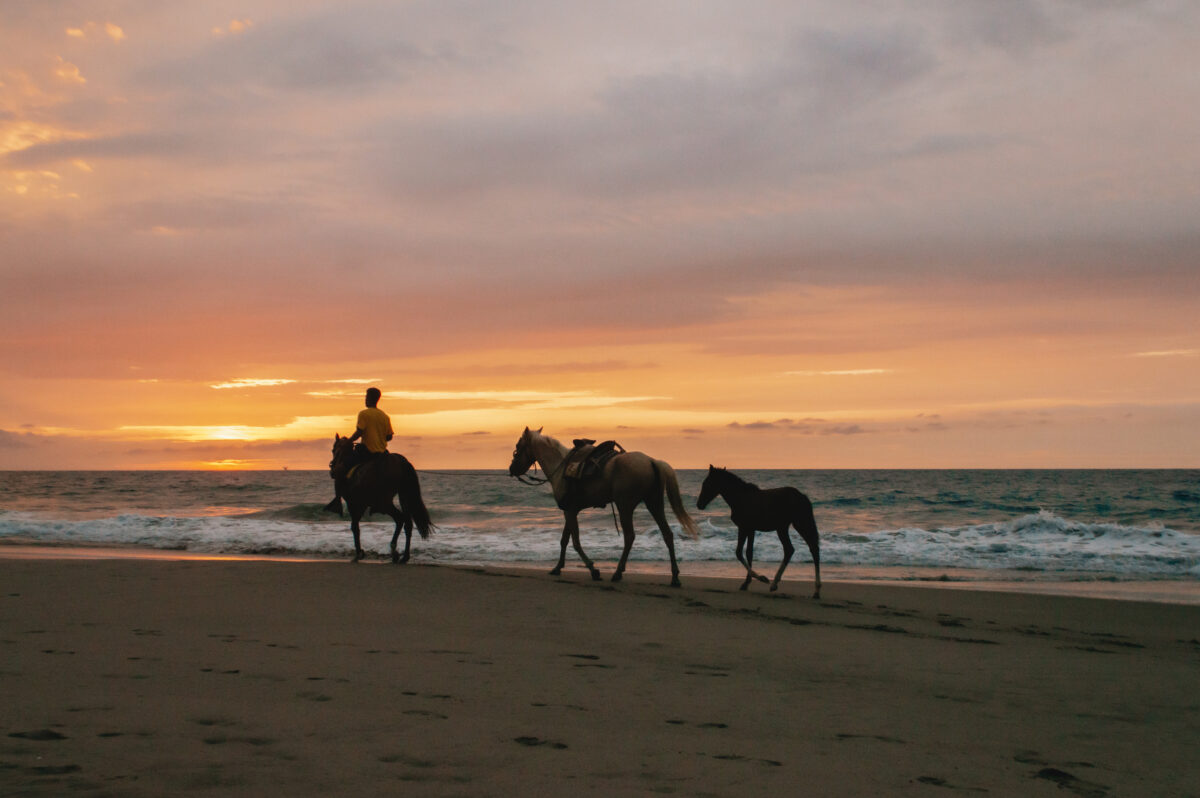
Máncora, Peru
On Peru’s otherwise rugged and cool Pacific coast, Máncora stands out as a rare year-round sunny escape. Tucked in the country’s far north, this beach town is known for golden sand, endless blue skies, and a laid-back vibe that draws surfers, backpackers, and Peruvian vacationers alike. Consistent swells make it one of the country’s top surf spots, luring wave riders from around the world.
But Máncora isn’t only about the waves. The main strip hums with cevicherías, surf schools, and beach bars that keep the town buzzing well into the night. For travelers crossing South America—like I did back in 2018—Máncora is both a stopover and a destination in itself: a place to slow down, surf, eat, and soak up a side of Peru few realize exists.
Playa de Spratt Bight, Colombia
Set in the western Caribbean, closer to Nicaragua than mainland Colombia, San Andrés is a small island with more than 40 beaches. They’re all fringed by what locals call the “Sea of Seven Colors”—a striking mix of turquoise, teal, and deep blue created by the contrast of sandy shallows, coral reefs, and sudden drop-offs.
The most iconic of the island’s beaches is Playa de Spratt Bight. Stretching wide along the town center, it’s known for its soft white sand, clear water, and lively, social atmosphere. Its central location makes it especially convenient, with beach bars and restaurants lining the promenade. The water is calm and shallow, perfect for swimming or cooling off between hours under the sun. And for those craving a bit of action, jet skis, parasailing, and banana boat rides are all on offer.
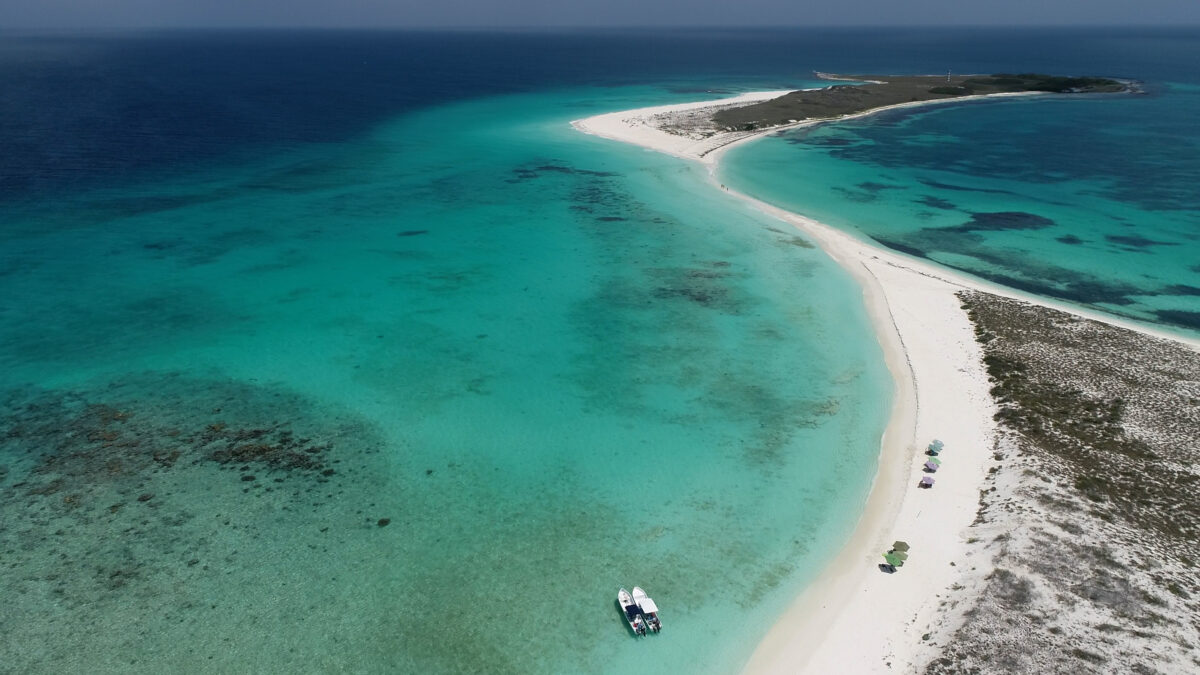
Los Roques Archipelago, Venezuela
Scattered across the Caribbean north of Venezuela, the Los Roques Archipelago National Park is made up over 300 cays and islands, most of them uninhabited. Protected since 1972, it’s one of South America’s most pristine coastal landscapes—a place where white sandbanks meet shallow turquoise lagoons, coral reefs teem with life, and the sea shifts through every imaginable shade of blue.
The only permanently inhabited island is Gran Roque, the main hub for visitors, where small guesthouses and posadas welcome travelers. From here, boats head out daily to nearby islets like Cayo de Agua, often named among the Caribbean’s most beautiful beaches. With little large-scale development and no cruise ship crowds, Los Roques remains a rare, untouched island escape in South America.
Because of logistics and the political situation, Los Roques tends to attract adventurous travelers, Venezuelan expats, or high-end tourists who come via private charter. Visiting requires flying in via Caracas and some careful planning—but those who make the journey are rewarded with one of the most unspoiled beach destinations in South America.
Anakena Beach, Chile
Few beaches in the world blend natural beauty with cultural heritage like Anakena on Chila’s Easter Island (Rapa Nui). This crescent of white sand is shaded by palms and lapped by calm turquoise waters, with the massive stone statues standing watch just beyond the shore.
Anakena is one of the island’s only swimmable beaches, its relatively warm water setting it apart from the chilly Pacific coast of mainland Chile. It also holds deep cultural significance: oral tradition says Anakena was the landing place of Hotu Matu’a, the island’s first king, making it the birthplace of Rapa Nui’s settlement.
Two restored ceremonial platforms still remain, with statues rising above the sand as they have for centuries. For visitors, a day at Anakena is a rare chance to experience a tropical beach in the shadow of one of the world’s most mysterious archaeological sites.

